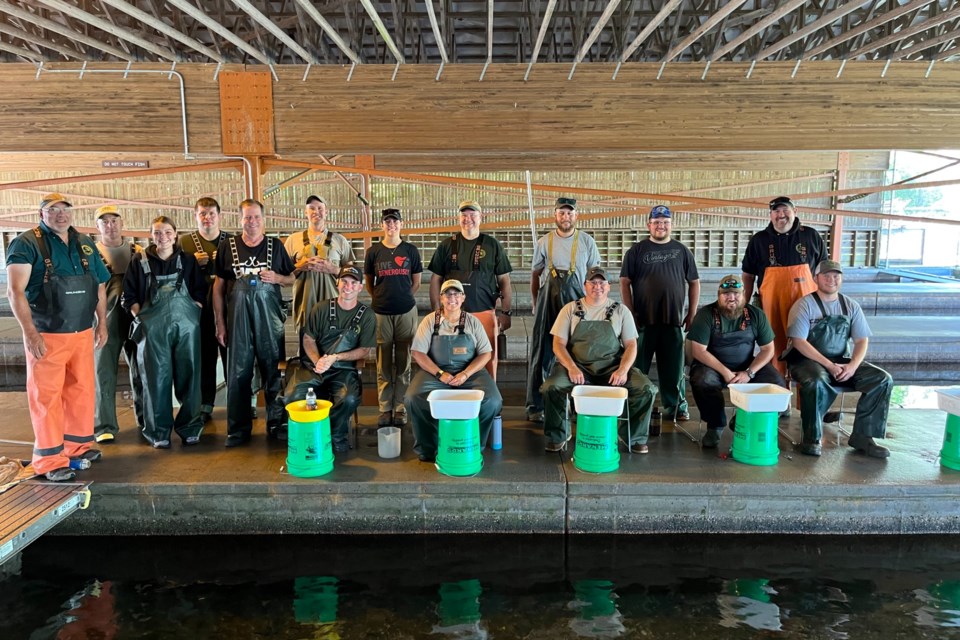Anglers are being asked to report any splake caught this fall to the Department of Natural Resources.
Splake – a hybrid cross between lake trout and brook trout – have been stocked in Lake Superior most seasons since 1971 and yearly since 1990. Marked splake have been central to that stocking effort since 2021, as part of an evaluation study, a news release said. At the Marquette State Fish Hatchery in Michigan’s central Upper Peninsula, staff from the DNR’s Lake Superior and Northern Lake Michigan management units, as well as field staff from across the state, carefully mark the splake by hand, the release said.
These fish are stocked in the spring at three Lake Superior ports: Copper Harbor, Keweenaw Bay and Munising. Splake stocked at each port are given a unique mark or fin clip consisting of a single fin or a paired clip, which has two fins. The goal is to create near-shore fishing opportunities in the smaller bays of Lake Superior, where some fisheries are available year-round.
The evaluation study will be conducted through 2030. It is designed to help fisheries managers understand the percentage of stocked fish caught by anglers, the home range of splake, and harvest metrics such as harvest rates and fish size at harvest by year and location.
Marked can be reported through the DNR’s Eyes in the Field app to give information such as species, length, weight, sex, and date and location caught, or by contacting a local DNR fisheries office.
Anglers also can report marked splake to DNR creel staff at various ports along the Lake Superior shoreline. Because they're genetically tied to both lake trout and brook trout, splake can take the external appearance of the parent species, making them difficult to distinguish. Creel staff can help to correctly identify the fish, determine the marks on the fish and record any angler trip data, the release added
“If you’re fishing for splake on Lake Superior this fall, we encourage you to talk with DNR creel staff, who are scheduled through the end of October,” said George Madison, a Michigan Department of Natural Resources fisheries biologist for the Western Lake Superior Management Unit. “It takes just a few minutes to share information about your fishing trip, but those details mean better data and greater understanding about splake abundance and behavior.”
Anglers are reminded, too, that other natural resources agencies and tribal units mark a variety of fish species for different evaluation purposes. For information on fish marking in Michigan, visit Michigan.gov/TaggedFish.



